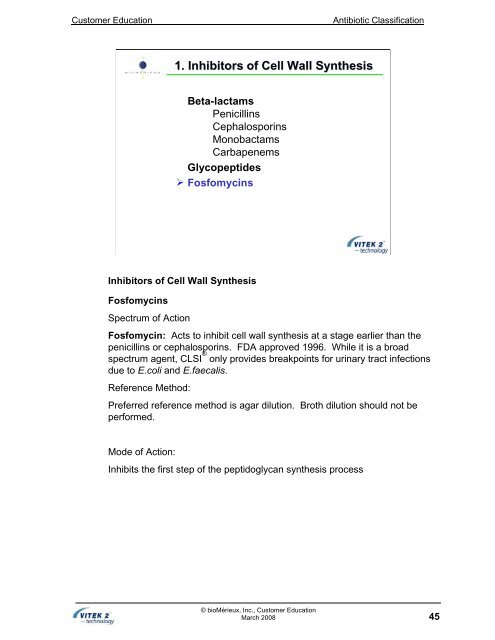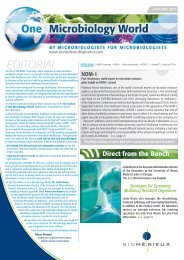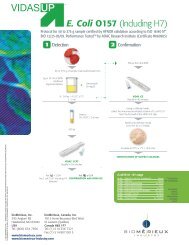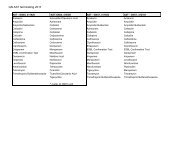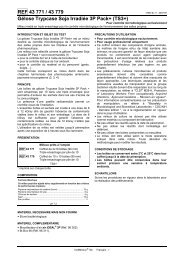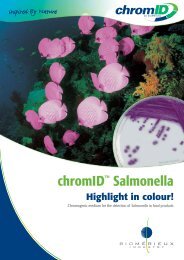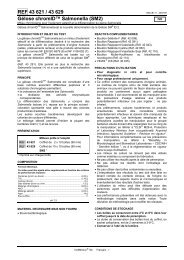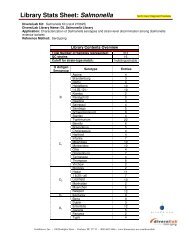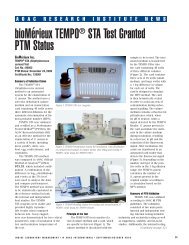Antibiotic Classification and Modes of Action - bioMerieux
Antibiotic Classification and Modes of Action - bioMerieux
Antibiotic Classification and Modes of Action - bioMerieux
You also want an ePaper? Increase the reach of your titles
YUMPU automatically turns print PDFs into web optimized ePapers that Google loves.
Customer Education <strong>Antibiotic</strong> <strong>Classification</strong><br />
1. Inhibitors <strong>of</strong> Cell Wall Synthesis<br />
�<br />
Beta-lactams<br />
Penicillins<br />
Cephalosporins<br />
Monobactams<br />
Carbapenems<br />
Glycopeptides<br />
Fosfomycins<br />
Inhibitors <strong>of</strong> Cell Wall Synthesis<br />
Fosfomycins<br />
Spectrum <strong>of</strong> <strong>Action</strong><br />
Fosfomycin: Acts to inhibit cell wall synthesis at a stage earlier than the<br />
penicillins or cephalosporins. FDA approved 1996. While it is a broad<br />
spectrum agent, CLSI ® only provides breakpoints for urinary tract infections<br />
due to E.coli <strong>and</strong> E.faecalis.<br />
Reference Method:<br />
Preferred reference method is agar dilution. Broth dilution should not be<br />
performed.<br />
Mode <strong>of</strong> <strong>Action</strong>:<br />
Inhibits the first step <strong>of</strong> the peptidoglycan synthesis process<br />
© bioMérieux, Inc., Customer Education<br />
March 2008<br />
45


